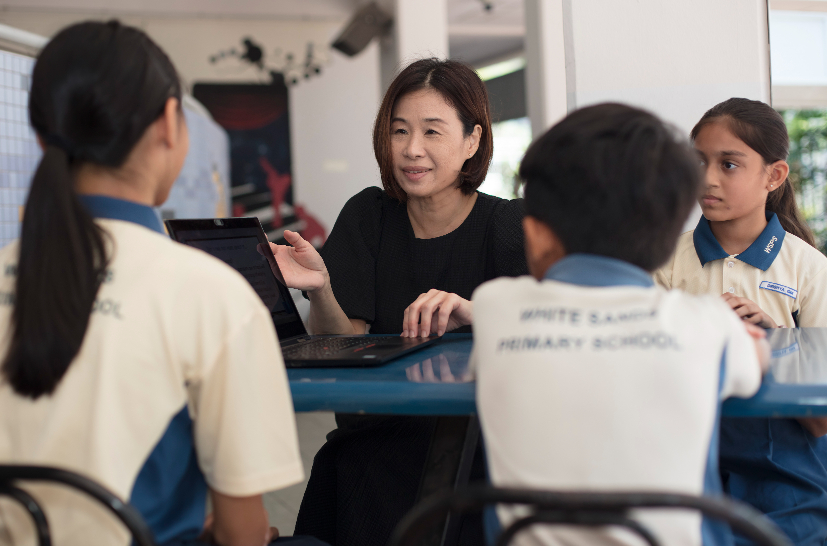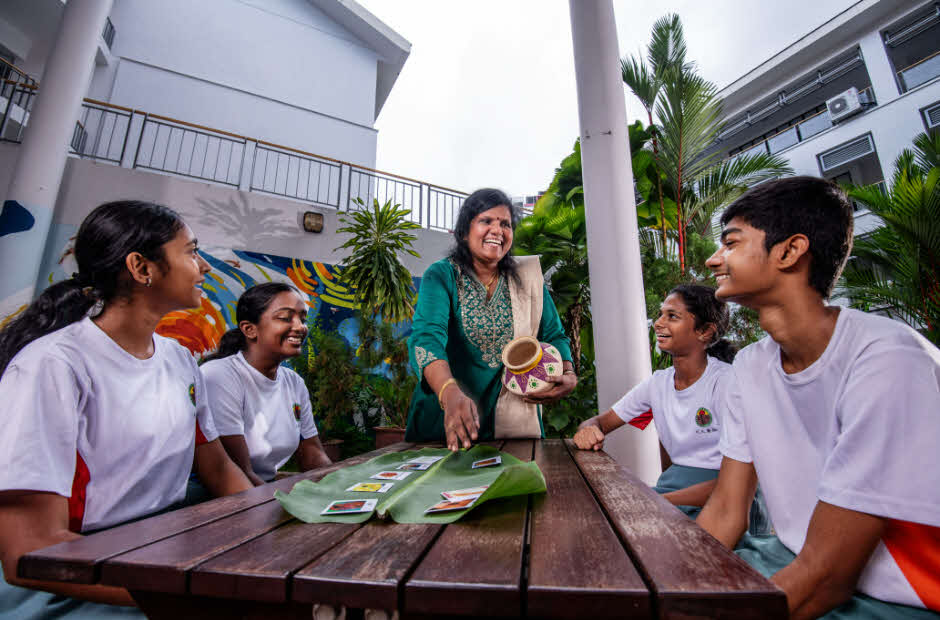Mdm Beverly Cheong, White Sands Primary School, President’s Award for Teachers 2022 Recipient
Years ago, Beverly Cheong received an invitation from a student to attend his polytechnic graduation. He had won a prestigious academic award and nominated her to be one of his guests at the ceremony.
She vaguely remembered his name, and how he had faced some personal struggles in secondary school. For a few years after leaving White Sands Primary, the boy would visit the school every Teachers’ Day. She could not fathom how she earned the honour of the visits or the invitation, but in true Mdm Cheong fashion, attended the polytechnic graduation anyway. No words were exchanged, but the boy’s gratitude rang loud and clear.
“These are the small ways that show me that you never know, as a teacher, what kind of impact you have on your students,” says Beverly, who has been an educator for 32 years. “At the end of the day, I always tell my students: ‘People do not remember you by your PSLE score but by who you are as a person’.”

Sowing into her students’ lives
As an educator, Beverly starts from the simple premise that every child wants to learn and can learn.
This was a lesson she learnt early in her career. She saw how some of her students lived across the Causeway and had to wake up at 4am to catch the bus and make the trip to school on time. They often got home late in the evening.
She wanted to match their dedication and sacrifice with her best care and attention, constantly checking in on them and not just on their learning.
When she encountered a student with selective mutism, she explored ways to get through to him. In time, he opened up.
“The students put in the effort to try because I build rapport with them and earn their trust. They know that there is somebody who cares whether they were learning or not,” says Beverly. Regarding the students who blossom under her care, she reflects, “it is very touching for me to watch them receive their PSLE results and see them move on to the next phase of their lives”.
Using Mathematics to teach confidence
Beverly takes on Maths teaching like how she shows care – it is not ‘one size fits all’. This is why she uses different approaches to teach what can be an intimidating subject to some students, turning each lesson into an opportunity to build confidence.
Some methods make use of manipulatives, which appeal to tactile and visual learners. Others involve articulating the steps during problem-solving, such as the five-step Math Talk Moves process. By making their reasoning process visible, Beverly can quickly identify and address her students’ misconceptions. By putting success within reach and increasing participation, she helps the students build self-esteem.
When Beverly cannot find a suitable solution for their learning needs, she creates her own. Over the years, she has customised existing teaching methodologies, devising methods such as ADAPTS (short for Analyse the problem, Determine the key concept, Arrange and Pull-out the information, Think of a heuristic, and Solve and check). With the acronym at their fingertips, students can easily recall the sequence of steps needed to tackle unfamiliar but challenging questions.
“The students put in the effort to try because I build rapport with them and earn their trust. They know that there is somebody who cares whether they were learning or not.”
And how does she help them see the relevance of Maths in their lives? She connects the topics to what they can relate to. With a topic such as Averages, she would use statistics on the average lifespan of a Singaporean, for example. “When we talk about facts such as Singaporean women living longer than Singaporean men, a student might point out that his grandfather is still living but his grandmother has passed on. These kinds of topics trigger more discussion and interest in the students,” she adds.

Teaching students to keep calm and carry on
To Beverly, it is not enough to simply equip students with problem-solving strategies. As part of social-emotional learning, students need room to make mistakes.
“When they are trying out a certain heuristic (method), they may not get it right the first time. I take this chance to show them that there is more than one way of answering the question. If the first method they use does not work out, then try another way. This builds resilience in them because they will not give up after one try,” she says.
She keeps an eye out for students who are having problems keeping up in class by looking for tell-tale signs of frustration during their work – frowning during class discussions for instance. She pulls such students aside for one-to-one sessions where she can isolate and work through the problems with them. Once they are able to catch up with their peers, they become more ready and confident, she observes.
For Beverly, social-emotional learning equips students with skills that goes beyond any subject. “We teach the students how to handle and manage their own emotions when they are faced with difficult situations. It could be a particularly tricky Math question, for instance. They learn how to keep calm, break the problem up into parts and then apply what they have been taught.”
When she looks back on her career teaching Mathematics, numbers have always been just a part of the equation. What she has been caringly cultivating in her students are the abstract benefits of resilience and confidence.





.jpg)
.jpg)